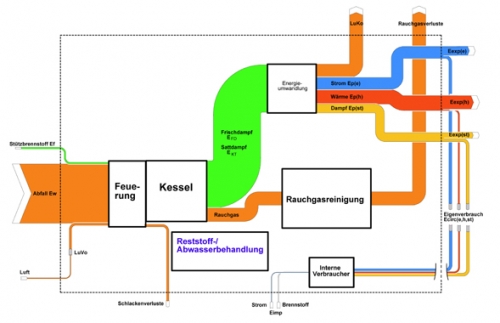The scientific paper ‘A Sankey Framework for Energy and Exergy Flows’ by Kamalakannan Soundararajan, Hiang Kwee Ho, Bin Su (Energy Studies Institute, National University of Singapore) features these two Sankey diagrams.
Energy flow in an open rack vaporiser (ORV):
Exergy flow in an open rack vaporiser (ORV):
The authors explain that “ORVs regasify liquefied natural gas (LNG) from temperatures below -160°C to room temperature through a heat exchange process with sea water at room temperature and pressure. (…) The Sankey representation of energy and exergy flows here presents a large potential for energy savings that could be realised in the regasification process.”
